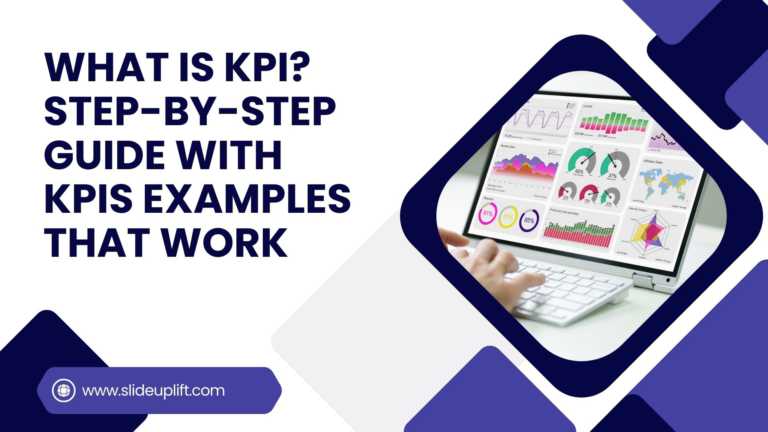The Savvy Project Manager Series: 5 Steps To Successful Project Planning
We encounter projects in our everyday lives. You might be building or contributing to a deliverable like a report, a website, a tool, or a product. These are real projects that have a defined start and end date, a goal, a scope, and resources. Whatever the type and size of a project, they all require some level of management, called Project Management.
Project management is a practice of applying knowledge of process, skills, tools, and techniques to project activities to ensure a path to project success by meeting requirements and within scope.
Project Planning
The Planning aspect of Project Management is purely output-oriented. It is primarily concerned with deciding what, how, when, and who will take the required actions to accomplish established objectives.
Project planning is a highly disciplined activity and is at the heart of effective project management. It is an essential skill for project managers to be able to plan and build an accurate timeline for the project. In this blog, let’s learn the best practices in effective Project Planning and several examples of effective Project Planning Templates.
Proper robust project planning is multidimensional and ensures focus on a variety of planning topics- many of which should be ignored at one’s own peril. There are many components of an effective project plan, and the most important is clearly defined project objectives. Often, a vague objective presents a problem since a clear sense of direction does not exist.
The primary components of a good project plan portfolio are-
Core Project Plan
This is the document that defines the key activities, timelines, dependencies, accountabilities that are needed to complete the project on budget, within the scope, and on time. A core project plan includes precise details like Scope planning, Scope definition, Activity definition, Resource planning, Activity sequencing, Cost estimating, Risk management planning, etc.
This is the fundamental responsibility of a project manager to know and maintain the boundaries of the project as planned. A poorly defined Project Scope is the number one cause of project distress. There is no substitute for spending a bit of extra time in the beginning to define the project objectives and boundaries.
Here are some examples of Project Scope Templates (One of the most important aspects of project planning templates).
Source: Project Scope Template by SlideUpLift
The project Timeline is another critical aspect of the Core Project Plan. A project timeline helps showcase all the project milestones with the timeframes in an easy-to-understand and engaging manner. Amongst different ways of presenting Project Timelines, the Gantt chart is one of the most popular tools for showcasing project timelines.
Here are some examples of Gantt Chart examples.
Source: Gantt Chart Template by SlideUpLift
Source: Quarterly Gantt Chart Template by SlideUpLift
Check out more Gantt Chart Templates.
In Addition, Check out more Project Timeline templates.
Source: Project Monthly Plan Template by SlideUpLift
Source: Project Plan timeline Template by SlideUpLift
Check out more Project Timeline Templates.
There are many tools available for core project planning with detailed planning exercises. The notable one being MS Project. However, when presenting this information, it is essential not to overwhelm people. That’s where Project Planning templates come in handy to help the audience see the big picture while communicating adequate details.
Budgeting Plan
This is a plan for managing costs, finances, and budgeting for the project to ensure the costs stay in alignment with the expectations. Having a solid plan helps avoid overruns and keeps financial discipline. It is important to do proper project budget planning as a miscalculation or poor judgment might result in the collapse of the whole Project. While planning the budget, project managers plan multiple scenarios of how the project may turn out.
Scenario planning enables Project Managers to respond dynamically to an unknown future. It assists them with thinking about the many ways the future may unfold and how they can be responsive, and effective, as the Project approaches its final stage.
Here are some examples of Budget Planning templates which are also an important aspect of Project Planning Templates.
Source: Project Budget Update Template by SlideUpLift
Source: Monthly budget Forecasting Template by SlideUpLift
Check out more Project Financial Update templates.
Source: Scenario Planning Template by SlideUpLift
Source: Project Scenario Planning Template by SlideUpLift
These are some Scenario Planning templates – another aspect of Project Planning Templates.
In short, scenario planning is a way that helps you to plan for potential problems in your business before they cause a crisis.
Communication/Stakeholder Management Plan
A communication plan meticulously outlines engagement between different stakeholders, when and in what format. This includes a detailed listing of the stakeholders, their responsibilities, their engagement with other teams, and the interaction schedule between various teams. It is important to have a communication plan in place because a lack of it will hinder the workings of the project impacting the project timelines, milestones, quality, and most importantly the morale of the team members.
Therefore, Project success hugely depends on effective communication and is an integral part of Stakeholder Management. Project Managers need to ensure that all the stakeholders have the same information on the project requirements and changes. If any stakeholder is not informed of changes, it risks mistakes or delays in the project work. Effective communication can maximize success and minimize risk.
Here are a few communication plan templates which can help you communicate with the team members.
Source: Project Communication Plan Template by SlideUpLift
Source: Roles and responsibilities Template by SlideUpLift
Source: Project Team RASCI Template by SlideUpLift
Team Plan
In a large project, it is critical to anticipate team dynamics, team aspirations, team skills, team readiness, and even mundane things like team availability. Effective, highly motivated teams are the foundation of any successful project. In fact, the difference between good and unsatisfactory project results is often linked to the effectiveness of the project team.
An effective team plan must provide clearly defined roles and responsibilities, clear direction, effective collaboration and communication, and reporting structure. This avoids conflicts regarding deliverables and helps achieve milestones on time. Project Managers create a RASCI matrix to ensure all project stakeholders understand their roles and responsibilities and whom they have to report.
Here are some Team Plan templates.
Source: Project Team Governance Template by SlideUpLift
Source: Agile Project Team Template by SlideUpLift
Source: Project Team Plan Template by SlideUpLift
Check out more Project Communication Plan templates
In short, an effective team plan ensures that resources are well-managed and the project is right on track.
Risk Mitigation Plan
The one thing a project can almost certainly expect is change and the associated risk. Any project can be threatened by factors beyond the direct control of the team. Whether the change is due to market influence, resource constraints, or global crises like COVID-19, it is crucial to list these down systematically and develop mitigation strategies and tactics.
Here are a few Risk Mitigation & Change Management templates (Important aspect of Project Planning Templates)
Source: Project Mitigation Plan Template by SlideUpLift
Source: Risk And Mitigation Plan Template by SlideUpLift
Check out more Risk Management templates.
To ensure your project’s success, define how you will handle potential risks so you can identify, mitigate, or avoid problems.
Quality Plan
On time, within the scope, and with quality is what the clients expect from a project that has met its objectives. A quality plan ensures that the quality aspects of the project are paid attention to and clearly communicated so the clients can avoid sleepless nights worrying about it.
In quality planning, the project manager defines the standards of the project that are required to be successful. Quality planning is done in conjunction with the rest of the project planning because it influences costs, scheduling, and other factors. Without strong quality planning, a project carries a huge risk of not meeting the client’s requirements and quality standards.
One of the most important aspects of Quality planning is quality metrics. Project managers need to go beyond the traditional metrics of scope, time, and cost. The process of quality assurance mainly focuses on quality measures like accuracy, precision, repeatability, and reproducibility.
Here are a few Quality Plan Templates for your review.
Source: Project Quality Review Template by SlideUpLift
Summary
Overall, good project planning provides a shared vision for what the project has to accomplish, gives clarity on the responsibilities of team members, a potent communication mechanism, and many more benefits. An effective Project Plan sets out the frameworks and processes that everyone is expected to follow to ensure project success. Check out our complete library of Project Planning Templates to get ideas on building an effective Project Planning Presentation.
Here is an example of the complete Project Planning template for your reference:
Source: Project Planning Templates by SlideUpLift
This video will give you a glimpse of our library of Project Management templates.
Now you don’t have to scour the web to find out the right templates. Download our PowerPoint Templates from within PowerPoint. See how?






























